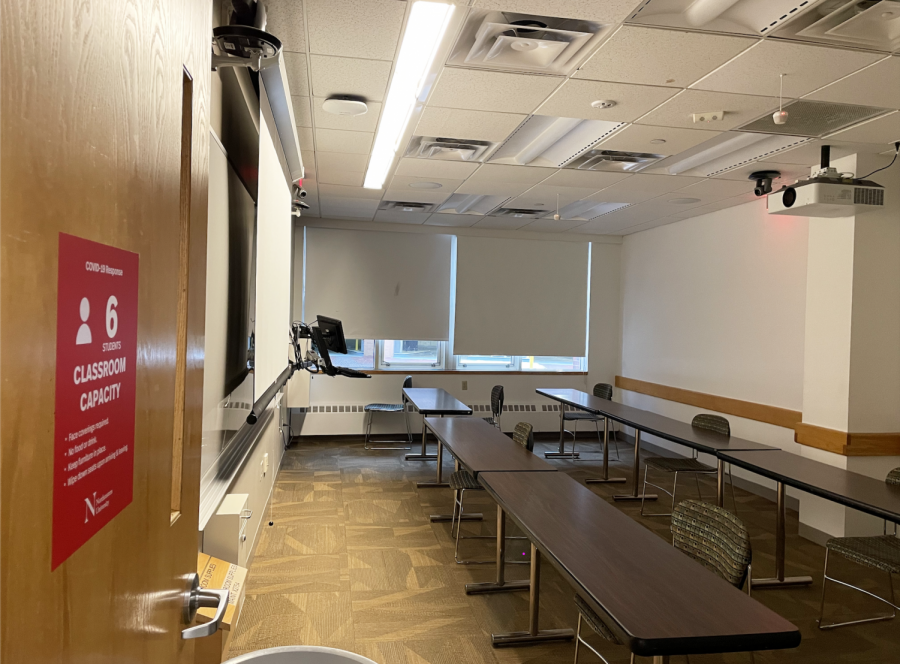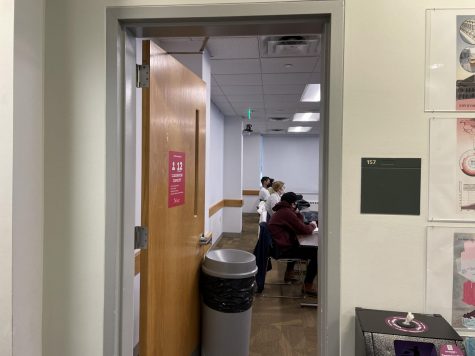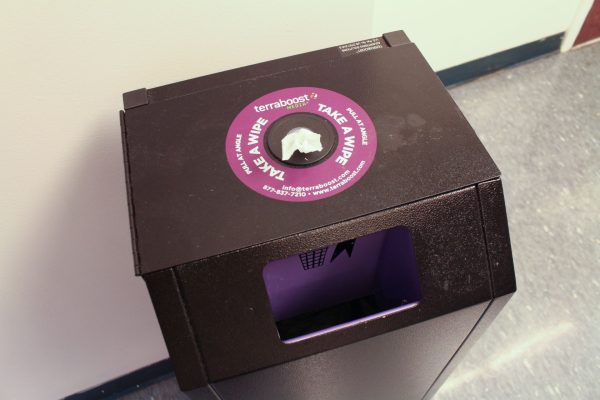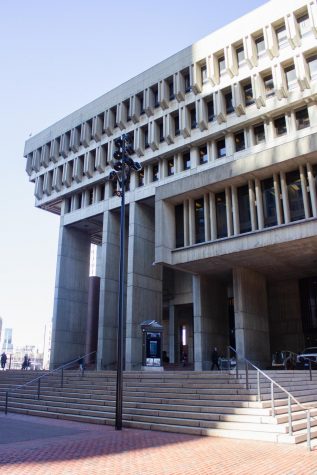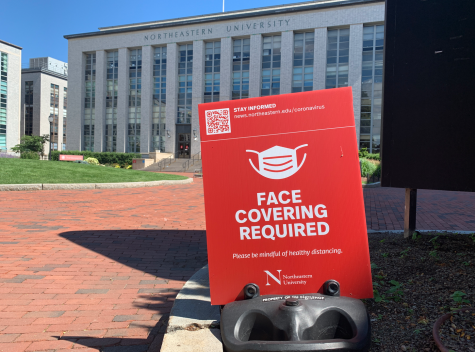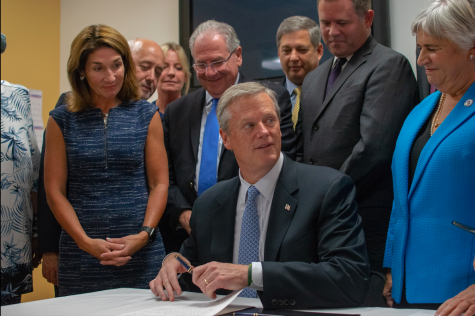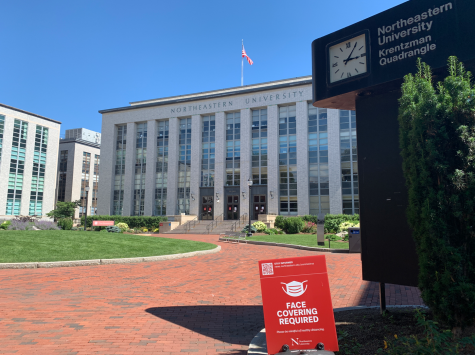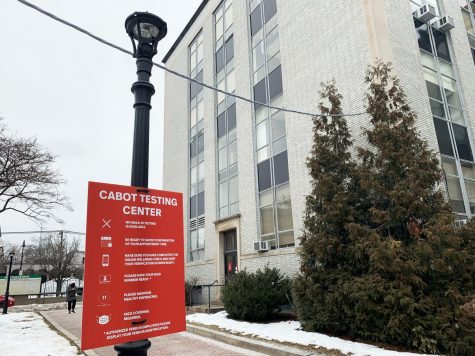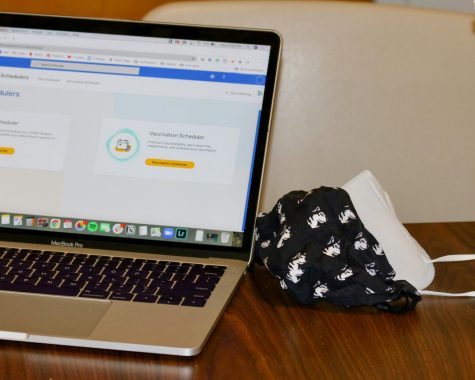Virtual teaching presents challenges, learning opportunities
Classes across campus are outfitted with technology — such as microphones and cameras — to assist with hybrid learning.
February 12, 2021
Elisa Kodama, a third-year biology major, sat in a Shillman Hall classroom with three other students and their professor. With a few swift keystrokes, the professor invited the remaining 36 students to join the class from home. Their tiny, faceless gray squares popped onto the screen at the front of the room.
The lecture was a virtual presentation void of interaction among students. As the Northeastern community adapts to hybrid NUFlex classes, students and staff have faced new hurdles to keep digital lessons engaging in a virtual format.
“I can imagine for a majority of the class who is doing it virtually, it can be disengaging because you’re staring at someone narrate PowerPoint slides,” Kodama said. “On our first exam [our class] did not do very well, especially relative to the other sections, and I wonder if that maybe was why.”
Northeastern’s transition to online classes last spring ushered in a new form of education. The university has installed video conferencing technology, part of the NUflex system, into on-campus classrooms. Some students learn online, either by choice or because of density restrictions, and interact virtually with the rest of the classroom. Some professors teach from home using software like Zoom. However, traditional teaching methods may not translate well to online platforms.
Experts say learning online constitutes a completely different experience than learning in a classroom. Effective teaching requires adaptation, rather than relying on old methods and materials.
“I think the first mistake is that everyone wants to replicate what they have been doing in a face-to-face environment and doing exactly the same thing in an online environment,” said Betül Czerkawski, professor of instructional design and technology at the University of Arizona, who has studied technology and learning for the last two decades. “These are like apples and oranges. They’re completely different.”
Before the pandemic, most Northeastern professors had never taught an online course, said Hilary Schuldt, director of project and team strategy at the Northeastern Center for Advancing Teaching and Learning Through Research, or CATLR. CATLR helps educators develop more effective teaching strategies. This year it served as a resource for many first-time online teachers.
“One of the things we often talk about with faculty is, how are you transforming your teaching, rather than how are you translating your teaching from on-ground to online,” Schuldt said.
When the university switched to online classes last spring, Claudia Sokol, associate teaching professor of Spanish, realized she did not know how to effectively communicate with her online students. Sokol has been at Northeastern since 1988, but had never taught an online class. During the fall 2020 semester, she planned to teach entirely from home.
Over the summer Sokol got to work, training individually with a colleague and taking two online classes offered by CATLR. She said her hard work and training has paid off.
“Now I’m comfortable with the new technology,” she said. “Lots of colleagues my age are not.”
Sokol said she was pleased with how smoothly she could communicate with students online.
Sokol prioritizes interactivity in assignments for her synchronous classes, Elementary Spanish and Advanced Spanish for Healthcare Professionals. Now she uses Padlet, an interactive bulletin board, for students to post photos and videos. One board about Día de los Muertos , or the Day of the Dead, was decorated with photos of extravagant costumes and brightly colored skulls. She also implements assignments where students post and respond to each other on video while speaking in Spanish.
“I’m so happy that I invested so much time in the right training,” Sokol said. “Not everyone is in the same boat.”
Besides answering questions about how to use new technology, Schuldt said CATLR receives a lot of requests for advice on how to best engage with students online.
“I think for some faculty there was a real sense of concern of, ‘I’m not in the classroom, how am I getting to know my students as people? How am I getting to know my students individually?’” Schuldt said.
This concern was shared by Dennis Svoronos, who teaches Studio Art and Design at Northeastern. He said that creating an artistic community between the teacher and students is an essential part of making creative objects. Otherwise, the process is “a little more flat.”
“There’s something missing when I sit in front of the NU Flex cart waving my hands,” Svoronos said.
He said he is lucky that his class structure did not have to change significantly to adapt to an online format. Much of his course focuses on working with 3D printers and laser cutters, which use online programs.
“The real downside that I find [is] not with the structure but in the downtime when I’d be walking around class,” Svoronos said. “[In person] I get that spidey sense that someone’s not on the same page. That can’t be conveyed over tiny squares.”
There’s something missing when I sit in front of the NU Flex cart waving my hands.
— Dennis Svoronos
To foster more interaction, Svoronos has students present their work to the class by sharing their screen rather than submitting assignments. He hopes this will generate discussions and encourage more social interaction. Some department leaders, however, have found that it is nearly impossible for their courses to be translated online. Last spring when the university shut down all in-person instruction, the chemistry department relied on videos for the lab sections, but professors were concerned this was not properly preparing students for later in life.
“Chemistry is about learning to handle glassware, mix chemicals and learning what precipitations should look like, and that’s hard to do just by watching someone,” said Penny Beuning, chair of the chemistry department at Northeastern.
This semester nearly all chemistry labs take place on campus or are otherwise deferred to a later semester. As a result, lab sections are split into groups, topics are reduced to a few key concepts and many more teaching assistants are available to help.
“Students, in general, seem appreciative to go to lab and do work,” Beuning said. “I think that for students going to lab seems normal.”
Regardless of the method, experts say there is no single way to teach in the new NUFlex model. Methods vary by class size, course content and what works for each educator.
“Different professors are approaching this differently; everyone has different strategies,” Czerkawski said. “But at the end of the day, good teaching is just good teaching.”


